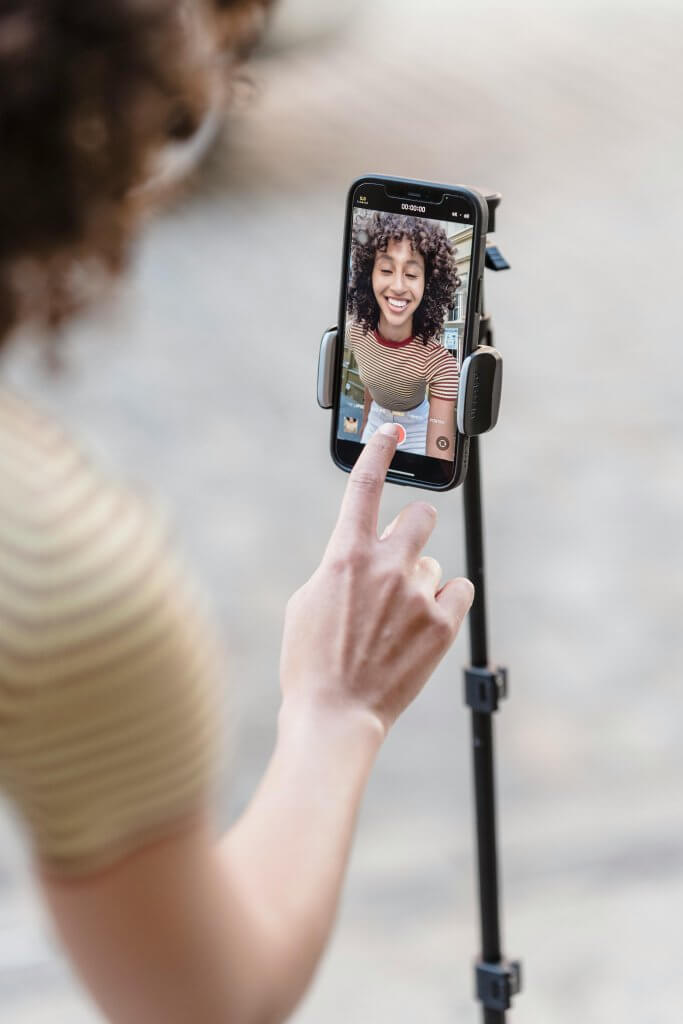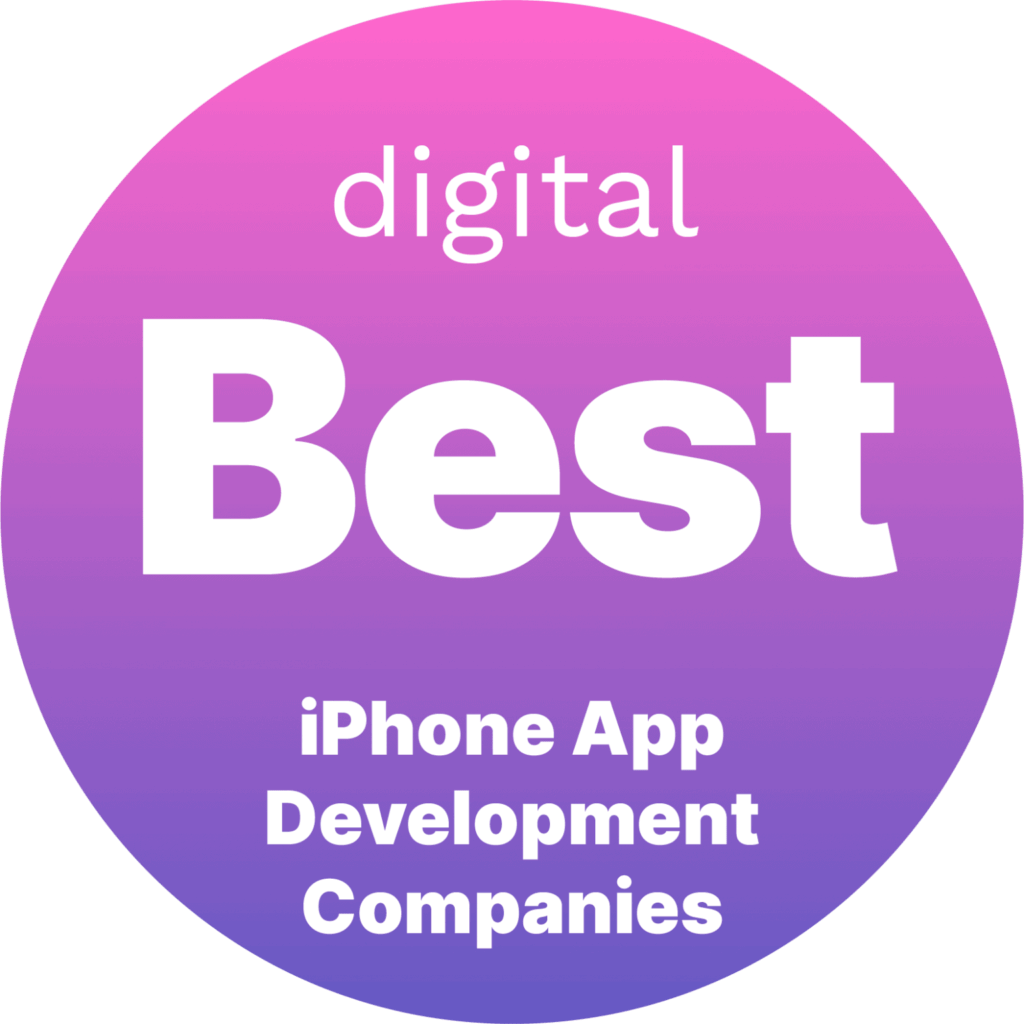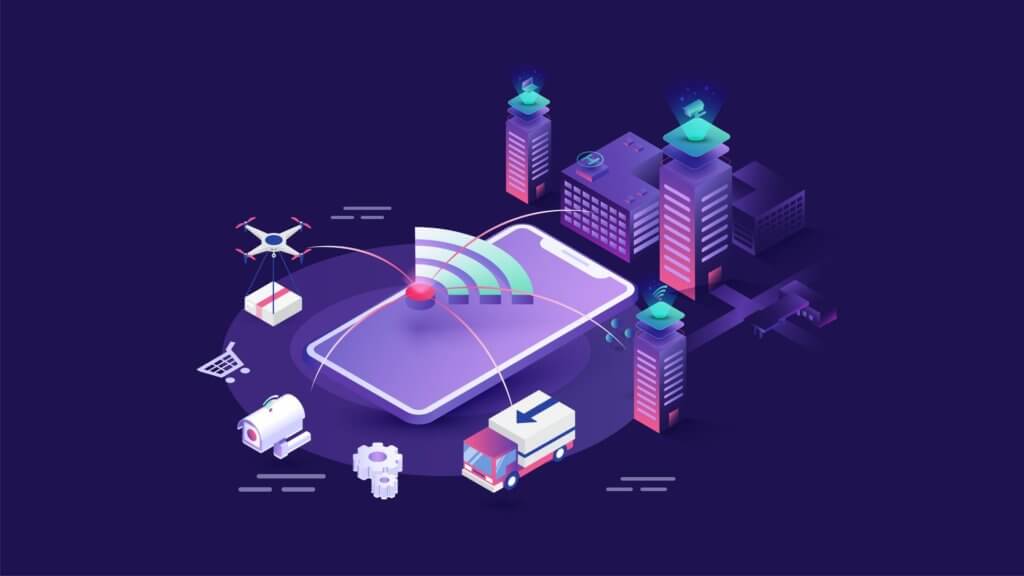Incorporating Video and Live Streaming in Your Mobile App: Engaging Users Visually
February 25, 2025 - 50 minutes readAfter reading this article, you’ll:
- Understand the significant impact of video and live streaming on user engagement, including how real-time interaction can boost engagement by up to 50%, and why features like live chat, Q&As, and community interaction are crucial for building user loyalty and retention.
- Learn the technical foundations needed to implement video streaming, including the choice between protocols like RTMP and WebRTC, the importance of CDNs for smooth delivery, and how to leverage existing SDKs and APIs to reduce development complexity.
- Discover various monetization strategies for video content, from advertising and premium subscriptions to live commerce and virtual gifts, along with real-world examples of successful implementations across different industries like education, fitness, and e-commerce.

In today’s digital landscape, visual content is king. Video and live streaming have become powerful tools for driving user engagement – over 80% of consumers say they would rather watch live video from a brand than read a blog or social post (10 Benefits of Live Streaming for Your Business). Video content now constitutes the majority of internet traffic (14 Stats That Show the Power of Video Storytelling for a Website), and users increasingly expect rich media experiences in the apps they use.
For businesses and startups, adding video and live streaming features to your mobile app can significantly boost user engagement, strengthen your community, and open up new revenue streams. This post explores the benefits of in-app video, strategies for integrating live features effectively, the tools and technologies that make it possible, best practices for a seamless user experience, monetization opportunities, and real-world examples of apps succeeding with video.
Benefits of Using Video and Live Streaming for Engagement
Higher User Engagement
Video is an inherently engaging medium that captures attention more effectively than text or static images. Users tend to spend longer in apps that offer video content. For example, Facebook found that people spend “more than 3× more time” watching a Facebook Live video on average compared to a non-live video (Taking into Account Live Video When Ranking Feed | Meta).
Live streams create a sense of urgency and real-time connection that keeps viewers hooked. Harvard Business Review reports that real-time interaction in live-streamed content can boost user engagement by 50% (How Peloton Enhances Customer Experience (CX) with Engaging Fitness Content) – viewers are drawn in by the immediacy and two-way interaction possible during live broadcasts.
Interactive, Community-Building Experiences
Live video allows your users to participate, comment, ask questions, and feel heard in the moment. This real-time engagement fosters a community around your app. Unlike pre-recorded videos, live streams enable conversations between the host and audience, creating a shared experience. When viewers feel valued and involved through live chat, Q&As, or polls, it builds a personal connection and loyalty to your brand (10 Benefits of Live Streaming for Your Business).
The unedited, authentic nature of live video also builds trust – audiences know “what you see is what you get.” In fact, the transparency of unfiltered live streams helps humanize your business and earn trust in a way polished marketing content cannot (10 Benefits of Live Streaming for Your Business). This trust translates into stronger long-term user relationships.
Greater Reach and Time Spent
Engaging video content can attract more users and encourage them to spend more time in your app. Many social platforms actually prioritize live videos in their feeds because they capture so much attention. By hosting video content natively in your own app, you keep users engaged in your ecosystem rather than sending them to external sites. You can also reach users who prefer consuming information visually. Overall, adding video can increase session durations and reduce churn as users come back for fresh, dynamic content instead of static text. Video is a medium people actively seek out; aligning your app with that preference can give your business a competitive edge.
Stronger Emotional Impact
Videos (especially live ones) convey tone, emotion, and personality better than text. This helps forge an emotional connection with your audience, whether through a founder’s live address, a behind-the-scenes look at your team, or customer testimonial videos.
Emotionally engaged users are not only more likely to stay; they also become advocates who share content. All these benefits – longer usage time, community engagement, trust, and emotional connection – contribute directly to improved user retention and satisfaction for your app.
Strategies for Effectively Integrating Video and Live Features
Incorporating video shouldn’t be an afterthought – it requires a strategic approach. Here are some key strategies to successfully integrate video and live streaming into your mobile app:
Align with Your Use Case and Audience
 First, identify how video or live streaming will provide value in your app. The implementation should make sense for your business goals and users. For example, a retail or beauty app might add live product demos or tutorials, a fitness app might stream live workout classes, a SaaS product could offer weekly live Q&A webinars, and a social or community app might enable user-generated video posts or live chats. Choose formats that complement your core service and enhance the user’s experience (e.g. offering live support or interactive walkthroughs).
First, identify how video or live streaming will provide value in your app. The implementation should make sense for your business goals and users. For example, a retail or beauty app might add live product demos or tutorials, a fitness app might stream live workout classes, a SaaS product could offer weekly live Q&A webinars, and a social or community app might enable user-generated video posts or live chats. Choose formats that complement your core service and enhance the user’s experience (e.g. offering live support or interactive walkthroughs).
Plan Content and Frequency
Develop a content strategy for your videos/live streams. Decide what type of content you will produce (educational, entertaining, behind-the-scenes, etc.) and how often. Consistency is key to build an audience – for instance, you might host a live session every week at a set time so users know to tune in. Plan topics in advance and promote upcoming live events through notifications or social media to drive attendance. Having a content calendar ensures you deliver fresh video content regularly to keep users engaged.
Start Small with an MVP
It’s often wise to start with a Minimum Viable Product (MVP) for your video features (How to Create Live Streaming App: Tech Stack, Features, Cost | Uptech). Rather than launching a fully complex video platform overnight, integrate the essential features first, test them with users, and iterate. For example, begin by embedding some tutorial or promotional videos in your app and gauging user response.
If live streaming, perhaps start with simple one-to-many broadcasts and basic chat. An MVP approach lets you gather feedback and work out technical kinks on a small scale. You can then expand features (like adding live chat, reactions, content libraries, etc.) based on what resonates most with your audience (How to build a live streaming app | Sendbird). This agile strategy prevents wasted effort and ensures the video experience truly matches user needs.
Build vs Buy Decision
Determine whether you will build the video streaming capabilities in-house or leverage third-party solutions. Developing a full live streaming infrastructure from scratch can be complex, time-consuming, and costly. Many startups integrate via SDKs or APIs provided by specialized video platforms. “If you already have an app, adding live streaming and chat capabilities can be easy with an API provided by a third party,” notes one guide (How to build a live streaming app | Sendbird).
Using proven services (for example, Twilio, Agora, Sendbird, Mux, AWS IVS, etc.) can drastically speed up implementation and ensure reliability, at the expense of some recurring cost. On the other hand, building in-house offers maximum control and can be worth it if video is core to your product and you have the expertise. Often a hybrid approach works – use third-party building blocks for the heavy lifting (streaming, encoding, delivery) while customizing the user interface and integration points to fit your app. Carefully weigh development cost, time-to-market, scalability needs, and the unique experience you want to create when making this decision.
Seamless Integration into User Flows
However you implement it, integrate video features as a natural extension of your app’s user flow. For instance, if you add a live stream feature, have clear entry points in the UI (like a “Live” tab or banner when a stream is on) so users discover it easily. Ensure that navigating to videos or livestreams is intuitive from your home screen or menu. You want video content to enhance the user journey, not feel bolted on.
Also consider where videos will live after a live broadcast – will you have a library of past streams (VOD content) for users to watch later? Plan how recorded videos are organized and presented to keep driving value from each live session.
Promote Engagement During Streams
Simply adding live video isn’t enough; you should actively encourage interaction. Prompt viewers to comment or tap reaction buttons during live sessions. Address user questions or shout-out commenters by name to acknowledge them. Consider enabling features like live polls, Q&A, or giveaways during streams to keep the audience participating. The more interactive the experience, the more invested your viewers become.
You can also integrate social features – for example, allow users to share a live stream link or invite friends, and send in-app notifications to followers when you go live (How to build a live streaming app | Sendbird). Effective integration means creating a feedback loop: live video drives engagement, and engagement drives better live content.
Tools and Technologies Available for Implementation
Building video streaming in a mobile app can seem daunting, but fortunately there are many tools and technologies available to simplify the process. Key components to consider include streaming protocols, cloud platforms, SDKs, and content delivery networks (CDNs):
Streaming Protocols
The foundation of live video is the streaming protocol. Two common choices are RTMP (Real-Time Messaging Protocol) and WebRTC (Web Real-Time Communication). RTMP is a long-standing protocol great for high-definition broadcast; it’s often used for events like concerts or conferences because it can deliver high-quality audio/video (How to Create Live Streaming App: Tech Stack, Features, Cost | Uptech).
However, RTMP typically incurs a 10–20 second latency between the broadcaster and viewers (How to Create Live Streaming App: Tech Stack, Features, Cost | Uptech), which may not be ideal for highly interactive streams. WebRTC, on the other hand, is designed for real-time peer-to-peer communication (used in apps like Zoom or video chat). WebRTC prioritizes minimal delay – it can achieve sub-second latency for truly live interaction (How to Create Live Streaming App: Tech Stack, Features, Cost | Uptech).
The trade-off is that it may reduce video quality if bandwidth is limited. Depending on your use case, you might choose RTMP for one-to-many broadcasts where a short delay is acceptable, or WebRTC for interactive experiences (like live consultations or collaborative sessions) where real-time responsiveness is crucial. Some platforms even combine approaches – e.g. ingest via RTMP and playback via HLS/DASH for scalability, or use WebRTC for small audience calls.
Video Hosting and Cloud Platforms
You will need a backend platform to host, process, and distribute your video streams. Rather than provisioning your own servers, it’s common to use cloud-based streaming services. For example, Amazon Web Services (AWS) offers a suite of media services (like AWS Elemental MediaLive for encoding, and Amazon IVS for low-latency streaming) (How to Create Live Streaming App: Tech Stack, Features, Cost | Uptech).
AWS also provides the global infrastructure (servers in many regions) to reach users everywhere. Other major cloud providers like Google Cloud and Azure have similar offerings for video streaming. There are also specialized video platforms such as Dacast, Wowza, or Mux that provide end-to-end solutions including stream management, transcoding, and player SDKs. When evaluating platforms, ensure they support the requirements you need – scalability (can handle your expected concurrent viewers), multi-platform support (mobile, web), and reliability.
A good platform will also offer features like cloud recording (to save live streams), playback of video on demand, and integration hooks (APIs) for your app. Choosing a robust streaming backend is critical because poor performance (high buffering or stream crashes) will quickly drive users away. Look for platforms with low latency delivery and support for adaptive bitrate streaming so that users on slow connections still get a smooth experience.
Mobile SDKs and APIs
 To integrate video into your iOS/Android app, you can use pre-built SDKs (Software Development Kits) from streaming providers. Many companies offer mobile SDKs that handle the heavy lifting of capturing video from the camera, encoding it, and streaming it out, as well as playing video streams within the app. For instance, Agora.io’s SDK enables live video and interactive broadcasting, Twilio Video offers APIs for video chat and streaming, Sendbird Live provides SDKs/UI kits for live streaming with chat (How to build a live streaming app | Sendbird) (How to build a live streaming app | Sendbird), and Google’s WebRTC (via frameworks like Google’s Flutter WebRTC plugin or native WebRTC APIs) can be leveraged for free.
To integrate video into your iOS/Android app, you can use pre-built SDKs (Software Development Kits) from streaming providers. Many companies offer mobile SDKs that handle the heavy lifting of capturing video from the camera, encoding it, and streaming it out, as well as playing video streams within the app. For instance, Agora.io’s SDK enables live video and interactive broadcasting, Twilio Video offers APIs for video chat and streaming, Sendbird Live provides SDKs/UI kits for live streaming with chat (How to build a live streaming app | Sendbird) (How to build a live streaming app | Sendbird), and Google’s WebRTC (via frameworks like Google’s Flutter WebRTC plugin or native WebRTC APIs) can be leveraged for free.
Using these SDKs can drastically reduce development time – you drop their library into your app, write a few lines to initialize a stream or video player, and the SDK handles the rest (device camera capture, encoding, network transmission, rendering the video on screen, etc.). Make sure to choose an SDK that fits your needs in terms of maximum stream quality, supported concurrent streams, additional features (like built-in chat, screen sharing, etc.), and cost.
Many have usage-based pricing (by minutes streamed or bandwidth used). Also ensure the SDK is well-supported across your target platforms (Android, iOS, possibly web if you plan a web app companion).
Content Delivery Networks (CDN)
To achieve a smooth, low-lag streaming experience globally, a CDN is essential. A CDN is a network of distributed servers that cache and deliver content to users from the nearest location. Video streaming involves delivering a lot of data fast – using a CDN helps minimize latency and buffering. Services like AWS CloudFront, Akamai, Cloudflare, or Fastly can distribute your live stream segments or video files across the world so that a user in London or Sydney can stream from a nearby server instead of your origin in e.g. North America (How to Create Live Streaming App: Tech Stack, Features, Cost | Uptech).
Many streaming platforms have CDN integrated (for example, AWS IVS uses Amazon’s CDN under the hood). When implementing video, ensure your solution leverages a CDN to handle spikes in traffic and maintain stream quality for all users. This will prevent issues where a surge of viewers overloads your origin server or distant users suffer from lag.
Supported Formats and Devices
Another consideration is video formats and device compatibility. A good implementation will transcode the video into multiple quality levels and formats (e.g. different resolutions and bitrates) so that both high-end and low-end devices, on fast or slow networks, can all view the content in an optimal way.
For instance, you might stream in HD for users on WiFi but automatically downscale to SD for a user on a weak mobile signal. Most streaming solutions handle this via adaptive bitrate streaming (HLS or DASH protocols). Just ensure the player in your app can play the chosen format (most mobile devices natively handle HLS streaming). Also, if your audience might watch on TVs or desktops in addition to mobile, confirm multi-platform support. Your chosen platform should support various streaming protocols and video formats compatible with smartphones, tablets, and desktops (How to build a live streaming app | Sendbird).
You don’t have to reinvent the wheel to add video streaming to your app. By combining the right protocol (balancing quality vs. latency), a reliable cloud streaming service, handy mobile SDKs, and CDN distribution, even a small startup can deliver a high-quality live video experience. Many of these technologies abstract away the complexity (encoding, scaling servers, etc.), allowing you to focus on building the product experience around the video.
Best Practices for a Seamless User Experience
Implementing video features is not just a technical challenge – getting the user experience (UX) right is equally important. Here are some best practices to ensure your users have a smooth and enjoyable experience with video in your app:
Design an Intuitive UI
Integrate video content in a way that feels natural and easy to use. Use clear icons or buttons for video-related actions (like a recognizable play button, a “Go Live” camera icon for starting a stream, etc.). Ensure that video player controls (play/pause, volume, fullscreen, etc.) are accessible and not too small on mobile screens. If your app includes live streaming, make the live content prominent (for example, highlight ongoing live sessions at the top of the feed).
The goal is that users can discover and engage with video content without confusion. Keep the interface clean – balancing rich features with an uncluttered UI is critical (How to build a live streaming app | Sendbird), especially on smaller mobile screens.
Optimize Video Quality and Performance
Nothing frustrates users more than a video that won’t load or constantly buffers. To avoid this, implement adaptive bitrate streaming so that the video quality auto-adjusts to the user’s connection in real time. This way a user on 4G or poor WiFi will simply get slightly lower resolution for a while instead of pauses. Conduct thorough performance testing on different devices and network conditions to ensure your video plays smoothly.
It’s also good practice to provide a manual quality selector or at least let users opt out of HD to save data if they want. Using a reliable platform and CDN as discussed will go a long way to ensuring stability. Monitor your video analytics for metrics like start-up time and rebuffering ratio – these will tell you if users are encountering lag. Aim to keep video start times and buffering to a minimum.
Minimize Latency for Live Interactions
If you are doing live streaming where audience interaction is expected (like live chat, Q&A), lower latency = better experience. Viewers will be frustrated if they ask a question and the host responds 20 seconds later due to stream delay. While some delay is unavoidable, try to keep it as low as possible – choose protocols/infrastructure optimized for low latency (for instance, WebRTC or low-latency HLS), and avoid adding unnecessary delays in your pipeline.
Many modern streaming services can achieve just 2-5 seconds of latency which is sufficient for casual interactions. Clearly communicate if there is any delay (so the host knows to wait a moment for responses, etc.). In low-latency modes, also ensure your chat/messaging is in sync with the video feed.
Provide Engaging Interactive Features (But Keep Them Optional)
The best live streaming experiences often include interactive elements like live chat, reactions (hearts, likes flying on screen), polls, or the ability to invite a viewer on camera. These can greatly enhance engagement by making viewers active participants rather than passive watchers. For example, enabling live comments and Q&A can turn a one-way broadcast into a dynamic conversation, increasing user satisfaction (10 Benefits of Live Streaming for Your Business).
However, make sure these features don’t overwhelm the video itself. Design the UI so that comments or reactions appear without obstructing the content (perhaps overlay transparently or allow hiding the chat). And consider moderation tools for live chat to filter spam or abuse, ensuring a positive environment.
Implement Notifications and Reminders
A common best practice for live content is to integrate push notifications or in-app reminders. If a user has expressed interest or follows your content, send them a notification when you go live (“Join us now for a live session!”) to draw viewers in. Also, allow users to opt-in to reminders for scheduled streams. This proactive approach helps maximize viewership for your live videos. Just be careful to not overdo notifications – make them relevant and let users control their preferences.
Ensure Accessibility
Don’t overlook accessibility in video content. Provide features like closed captions or subtitles for your videos so hearing-impaired users or those watching without sound can still engage. Captions are also useful because many people watch videos with the sound muted (e.g. in public places). You can use speech-to-text services or scripts to generate captions for recorded videos, and consider live captioning for important live streams if possible.
Providing text transcripts of informational videos is another way to cater to all users and improve SEO. In fact, adding captions and transcripts not only broadens your audience but also makes content searchable and more easily understood in sound-sensitive environments (Why Is Video Integration in Mobile Apps a Profitable Choice for Your Business?). Also ensure your color choices for any live overlays have good contrast, and test your video player with screen readers to confirm it’s navigable.
Test, Iterate, and Gather Feedback
Once your video features are live, gather user feedback on the experience. Monitor analytics (completion rates, drop-off points, engagement actions taken) to identify any UX issues. Perhaps users aren’t discovering the video content easily – that’s a cue to improve placement or onboarding tips. Or maybe you find many users try the live stream but drop after a minute – that could indicate quality issues or content not matching expectations.
Conduct user testing sessions specifically around the video features – watch how new users find and use the video, and make improvements accordingly (How to build a live streaming app | Sendbird). User expectations for streaming evolve quickly, so be prepared to refine your UI/UX over time (for example, adjusting to trends like vertical video formats, Stories-style short videos, etc., if those become popular in your niche).
By focusing on user experience design as much as the technical delivery, you’ll ensure that the video and live streams in your app feel seamless and delight your users rather than frustrate them. A high-quality, intuitive experience will keep viewers coming back and engaging more deeply with your content.
Monetization Opportunities Through Video Content
Incorporating video can also unlock new monetization opportunities for your app. Engaging video content not only attracts and retains users – it can directly generate revenue in various ways:
Advertising
Video opens the door to in-app video ads, which often have higher CPMs than banner ads. You can integrate short video ads (e.g. pre-roll or mid-roll in streams) or sponsored segments in live broadcasts. Many advertisers are eager to pay for placement in engaging video content. Just be sure to balance ad load to not detract from user experience.
Premium Content and Subscriptions
If you produce high-value video content, you can put it behind a paywall or offer subscription plans for full access. For instance, a news app might have free short clips but require a subscription to watch long-form live shows. Or a fitness app can charge for premium live classes. Membership models can generate recurring revenue if the video content is compelling. As one case showed, you “don’t need a million subscribers to start earning” – even niche live streams with a dedicated audience can be monetized via subscriptions or memberships (10 Benefits of Live Streaming for Your Business).
Pay-Per-View and Ticketed Events
Another model is one-time purchases for special video events. You can sell tickets to live-streamed events – such as a paid virtual conference, a concert, or an exclusive webinar. Users might buy access via an in-app purchase and then tune into the live event. This works well for unique value content (expert talks, entertainment, etc.). Some platforms enable pay-per-view streams natively, or you can implement it through your app’s payment system.
Live Commerce (Shoppable Video)
Live streaming has emerged as a powerful sales channel, blending entertainment with shopping. E-commerce businesses can leverage live video to showcase products and drive impulse purchases in real time. For example, during a live demo of a product, you can display “Buy Now” buttons or links for viewers to purchase featured items.
Limited-time offers or discounts for live viewers create urgency and boost sales. This model, often called live shopping, is already huge in Asia and growing globally – viewers are far more likely to buy a product after seeing it demonstrated live (Livestream E-commerce – PONGO: Top Digital & Content Partner). By integrating a checkout flow into your live stream (or directing users to product pages in-app), you can convert engagement into immediate revenue. Facebook, Instagram, and Amazon have all invested in live shopping features, and startups can do the same on a smaller scale.
Sponsorships and Branded Content
If your live streams attract a sizable audience, you can partner with sponsors who pay to have their brand mentioned or displayed during your videos. This is common in webinars, podcasts, and live shows – e.g. “this stream is brought to you by [Sponsor].” Sponsors may pay a flat fee or a CPM for exposure to your viewers. Influencer apps or any content-driven app can tap into sponsor deals once viewership is high enough.
User Tips and Virtual Gifts
In many live streaming communities (gaming, music, etc.), apps allow viewers to send tips or virtual gifts to streamers as a form of appreciation. The app typically takes a cut of these transactions. If your app will host user-generated live streams or creator content, implementing a tipping system can both incentivize creators to produce content and provide revenue (as you take a platform fee). Even without UGC, if you host interactive sessions (e.g. an expert giving advice), some users might pay or tip for personalized responses.
Video-On-Demand Sales
Beyond live streaming, having video content in your app lets you sell or rent on-demand videos. For example, a language learning app could sell a pack of premium video lessons. A conference app might charge for recorded session videos after the event. This can be an additional revenue stream leveraging your library of video content.
In short, video content can be monetized through a variety of models – sponsorship, ads, live shopping, pay-per-view events, subscriptions, membership programs, even spin-off products like courses or coaching (How to build a live streaming app | Sendbird). The right approach depends on your app’s context and audience willingness to pay.
Many successful apps use a mix of these methods. For instance, a platform might offer free live streams to build audience, monetize via sponsorships and product placements, and also have a premium subscription for exclusive video content – effectively layering multiple revenue streams. Be creative in finding what monetization method aligns with your content strategy.
Just remember to keep value to the user front-and-center; if the monetization detracts from the user experience (too many ads, etc.), it can backfire on engagement. When done thoughtfully, integrating monetization with video features can significantly boost your app’s revenue while enhancing user satisfaction (since users are often happy to pay for content they love).
Case Studies: Apps Succeeding with Video and Live Streaming
To inspire your strategy, here are a few real-world examples of businesses that enhanced their apps with video/live streaming and saw great success:
- Prodigies Music App – Building Community and Revenue with Live Classes: Prodigies is an educational music app that offers lessons for kids. The founder, Rob Young, started by filming music courses and later began doing live-streamed training sessions as a way to engage and convert his audience. This use of live streaming as a marketing and community-building tool paid off tremendously. According to a case study, Rob “leveraged live streaming as a way to generate leads and build community at the same time, and it’s paid off.” (Case Study: How Prodigies Scaled to Over $40k a Month with Apps | Uscreen) By hosting free live music classes and Q&As in the app, he showcases the value of his curriculum to prospective customers while existing subscribers tune in and participate. These live “community events” create buzz – viewers see an active, positive community in real time, which encourages them to subscribe. As a result, Prodigies grew to over 7,000 subscribers and now generates $40k+ per month, with exceptionally high retention rates (Case Study: How Prodigies Scaled to Over $40k a Month with Apps | Uscreen). This example illustrates how even a niche startup can use live video to drive engagement and conversions: the live sessions function as both content marketing and a loyalty program, fostering a passionate user base that spreads the word.
- Instagram – Boosting Engagement with Live and Stories: Instagram is a prime example of an established app that integrated new video features to great effect. Originally a photo-sharing app, Instagram introduced Stories (short videos) and Instagram Live to keep users more engaged on the platform. The result was dramatic – during the COVID-19 pandemic, Instagram Live usage jumped by 70% as users and influencers flocked to live video for real-time connection (65 Instagram Statistics for 2025). Features like live comments, the ability to go live with a friend (split-screen), and saving live videos to IGTV extended user engagement on the app. Instagram Live has enabled brands and creators to host product launches, tutorials, and performances, keeping users spending more time in-app. This success underscores that introducing live video can reinvigorate user engagement even for an already popular app, by tapping into the audience’s desire for interactive, real-time content.
- E-Commerce Live Shopping – Instant Engagement to Instant Sales: Retailers and marketplace apps have also embraced live video. For example, Amazon Live allows sellers to demo products live on Amazon’s app, and fashion retailers have used live streams to showcase new collections. Many have found that real-time video demos can significantly boost sales conversion. Viewers can ask questions about the product and see it in action before buying – replicating the experience of an in-store demo. One digital agency notes that an enticing offer or demonstration on a live stream can lead to “instant sales during your livestream session.” (Livestream E-commerce – PONGO: Top Digital & Content Partner) This trend, inspired by the enormous success of live commerce in China (like Alibaba’s Taobao Live), shows that integrating live video shopping in an app can turn user engagement directly into revenue. Startups like NTWRK and Whatnot have built entire platforms around this concept, blending video entertainment with ecommerce to great success.
- Fitness and Wellness Apps – Live Classes for Engagement: Apps in the fitness space (e.g., Peloton, Calm, Fitbit) have added live or video content to increase user engagement. Peloton’s mobile app, for instance, streams live workout classes and leaderboards, creating a community vibe where users feel like they’re attending a class together from home. This live engagement is a key part of Peloton’s value. According to research, real-time interaction in live content (like a live fitness class where instructors shout out participant names or adjust workouts on the fly) keeps users 50% more engaged (How Peloton Enhances Customer Experience (CX) with Engaging Fitness Content), which in turn motivates them to stick with the program and the subscription. Even if you’re not in fitness, the principle holds: delivering content live (a guided meditation session, a live coaching call, etc.) can make users more committed and likely to retain, versus just on-demand content.
These examples span different industries, but all illustrate a common theme: video and live streaming can significantly elevate an app’s user engagement and business outcomes when implemented thoughtfully. Whether it’s creating a loyal community for an education platform, adding interactivity to social media, driving e-commerce sales, or enhancing a service with live expertise, the power of visual live content is transformative. Take inspiration from these cases and consider how a similar approach could apply to your app’s niche.
The Next Steps
For businesses and startups, incorporating video and live streaming into your mobile app is a high-impact way to boost user engagement, deliver more value, and differentiate your product in a crowded market. Users today crave interactive, visually-rich experiences – by meeting that demand, you not only delight your audience but also open new avenues for growth. We’ve discussed how video content can deepen engagement through real-time interaction, build trust and community, and significantly increase the time users spend in your app. With a strategic approach, you can integrate these features effectively: planning content that aligns with your users, choosing the right technologies (or partners) to implement streaming reliably, and polishing the user experience for seamless viewing. Remember to leverage best practices like adaptive streaming for quality, intuitive UI design, and accessible features like captions to ensure everyone can enjoy your content without friction.
The investment in video capabilities can pay off not just in engagement metrics but also financially – from ad revenue and subscriptions to live commerce and beyond. As we saw in the case studies, even small startups have achieved outsized results by using live video creatively to build a passionate user community and monetize their content. The key is to focus on providing genuine value and interaction through your videos, rather than treating it as just another content format. When users feel connected and involved, they engage more and your business benefits in turn.
Now is the time to consider adding a visual dimension to your mobile app. Start with clear goals: do you want to educate, entertain, support, or sell? Then craft a video/live strategy around those goals and follow the integration tips outlined above. Whether it’s a live streamed event, an embedded how-to video, or a user’s short clip shared in your app’s feed, video can take your app experience to the next level. Professional yet authentic content will reflect positively on your brand. By providing a platform for rich visual content and real-time interaction, you’ll foster deeper user engagement that keeps people coming back – and that’s ultimately the recipe for sustained success in today’s app market.
Lastly, keep measuring the impact and gathering feedback. User engagement is a dynamic target, so continuously refine your video offerings. If you do, you’ll ensure that your app not only stays relevant as consumer preferences evolve, but becomes a leader in delivering the kind of compelling, interactive experiences that modern mobile users have come to love. Embrace the power of video and live streaming, and watch your user community and business thrive in response. Good luck, and happy streaming!
Frequently Asked Questions (FAQs)
What’s the difference between RTMP and WebRTC, and which should I choose for my app?
RTMP (Real-Time Messaging Protocol) and WebRTC serve different purposes. RTMP is better for high-quality broadcasts with larger audiences, but has a 10-20 second latency. It’s ideal for events like concerts or conferences. WebRTC offers sub-second latency and is perfect for interactive experiences like video calls or live Q&As, but may sacrifice some video quality on poor connections. Choose RTMP if video quality is paramount and slight delay is acceptable, or WebRTC if real-time interaction is crucial for your use case.
How can I ensure my live streaming feature doesn’t drain my app’s resources or become too expensive?
Start with a minimum viable product (MVP) approach and use third-party SDKs instead of building from scratch. Most streaming providers offer usage-based pricing, so you only pay for what you use. Implement adaptive bitrate streaming to optimize bandwidth usage, and leverage CDNs to distribute the load. Consider beginning with basic features like one-to-many broadcasting and simple chat, then expand based on user demand and ROI.
What are the most effective ways to monetize video content in my app?
There are several proven monetization strategies: advertising (through pre-roll or mid-roll ads), premium subscriptions for exclusive content, pay-per-view for special events, live commerce (selling products during streams), sponsorships, and virtual gifts/tips from viewers. The best approach often combines multiple methods – for example, offering free content with ads while providing an ad-free premium tier with exclusive features. Choose methods that align with your audience’s preferences and willingness to pay.
How can I maximize user engagement during live streams?
Focus on creating interactive experiences through features like live chat, polls, and Q&As. Encourage hosts to acknowledge viewers by name and respond to comments in real-time. Send push notifications to alert followers when you go live, and maintain a consistent streaming schedule. Also ensure your UI makes it easy to discover live content and interact with streams. Remember that engagement features should be optional and non-intrusive for viewers who prefer to just watch.
Do I need to build my own streaming infrastructure or should I use existing solutions?
For most apps, using existing solutions is the recommended approach. Services like Twilio, Agora, Sendbird, or AWS IVS provide reliable infrastructure and SDKs that handle complex tasks like encoding, delivery, and scaling. This dramatically reduces development time and technical complexity. Building your own infrastructure only makes sense if you have very specific requirements that existing solutions can’t meet, or if video is core to your product and you have the expertise and resources to maintain it.
Tags: live streaming, mobile app live streaming, video streaming








